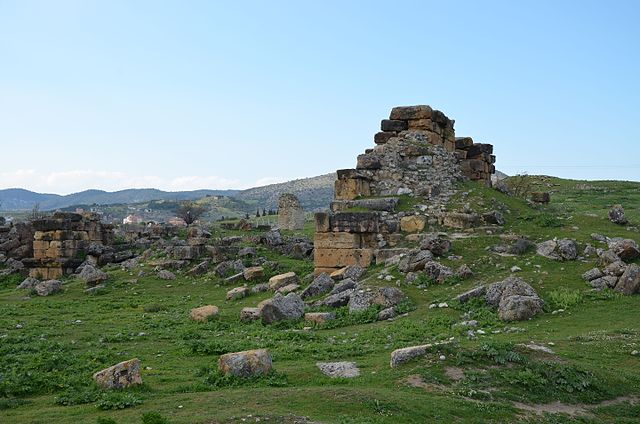In Greek mythology, Omphale was queen of the kingdom of Lydia in Asia Minor. Diodorus Siculus provides the first appearance of the Omphale theme in literature, though Aeschylus was aware of the episode. The Greeks did not recognize her as a goddess: the undisputed etymological connection with omphalos, the world-navel, has never been made clear. In her best-known myth, she is the mistress of the hero Heracles during a year of required servitude, a scenario that, according to some, offered writers and artists opportunities to explore sexual roles and erotic themes.
In an antique fresco from the home of the Prince of Montenegro at Pompeii, a drunken Heracles is on the floor as Omphale and maidservants look on from above.
Heracles and Omphale, Roman fresco, Pompeian Fourth Style (45-79 AD), Naples National Archaeological Museum, Italy
Hercules and Omphale, detail of a Roman mosaic from Llíria (Spain), third century.
Omphale, by Constantin Dausch
Lydia was an Iron Age kingdom situated in the west of Asia Minor, in modern-day Turkey. The ethnic group inhabiting this kingdom are known as the Lydians, and their language as Lydian and their capital was Sardis.
Portrait of Croesus, last King of Lydia, Attic red-figure amphora, painted ca. 500–490 BC.
The temple of Artemis in Sardis, capital of Lydia
Tripolis on the Meander is an ancient Lydian city in Turkey.
Büyük Menderes River also known as Maeander is a river in Lydia.








